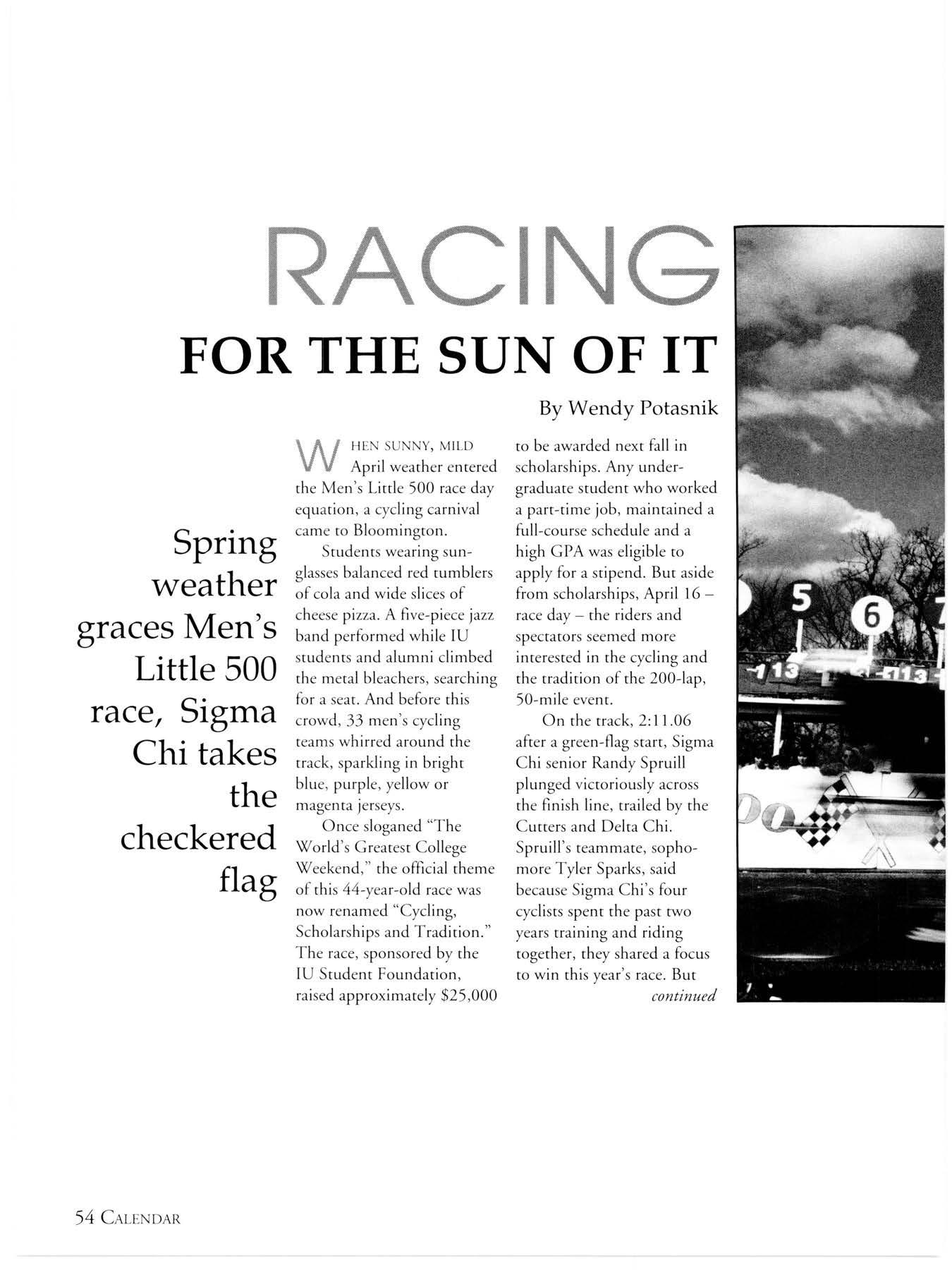
4 minute read
Campus Obstacles
A DRIVER of the busline tell Suzanne Ament, doctoral histor student, which stop they are at so sh and Sparkle, her seeing-eye dog, cai go to the Union.
°VERO° NG
Advertisement
CAMPUS OBSTACLES
By Wendy Potasnik
TWO YEARS BEFORE THE
American Disability Act became law in 1992, Director of Disabled Services Steve Morris began noticing the University making buildings and services accessible to disabled students. From providing readers for blind students to constructing ramps in Dunn Meadow, Morris has since helped to provide equal opportunities for disabled faculty and students on campus.
Morris said 90 percent of University buildings are accessible. But, because in some cases "accessible" may mean no more than one available entry to a doorway, he said there was room for improvement. "In the last three to four years, we have been busy with the Crescent Project, the renovation of nine buildings on the older part of campus," Morris said. These included Kirkwood Hall, Lindley Hall, Maxwell Hall, Myers Hall, Owen Hall, Rawles Hall, the Student Building, Swain East and Wiley Hall. The buildings were being renovated because they were in need of repair, although many of those repairs coincided with ADA regulations.
"The ADA requires that you do a self-assessment for handicapped accessibility," Morris said. "Indiana University identified a $9-10 million barrier removal accessibility figure, but there's a hold on funds now." This evaluation was the first effort of its kind since the late 1970s. The $9-10 million figure was what it would ideally cost the University to make the necessary changes to the identified buildings.
Morris said change is a slow process because little construction is being done. continued

Disabled students must conquer barriers to get to class
FINGERS see for Suzanne Ament, doctoral history student, who said some of the inscriptions are big enough to be easily distinguished, while others are not.
Beyond the Crescent Project, money allocated by the University will be used for minor repairs, adjustments and maintenance of facilities like the automatic doors in the Education Building and the elevators in the Chemistry Building and Jordan Hall.
Although some electronic conveniences often helped students avoid heavy doors and stairs, some obstacles on campus were inescapable for many disabled students.
Suzanne Ament, a blind doctoral history student, said she was attracted to the University for its history program and said it was helping her to achieve her goals. But aside from academics, she said she found many of the challenging aspects of her education on the University's physical campus. "You have to have initiative to make it here," Ament said. "It's not an easy place ... the trickiest part of campus for me is the area between Ballantine and Woodburn Halls, where the bridges cover Jordan River." "Also, it's hard to go to the HPER by myself. It would be nice to allow for disabled students to use the recreational sports facilities. The outside track there is narrow, and people walk, run and tie their shoelaces on it," Ament said. "I used to go to IU Fit, but my friend had to show me what [exercises] to do. I've kind of given up."
But Senior Julie Hofius hasn't given-up.
Hofius, who has been using a wheelchair since her car accident in 1986, said the biggest obstacles she faced on campus were the snow- and ice-covered streets during the winter months. Following one of last year's storms, she stayed home from classes for a full week. Beyond her personal challenges, she continued to educate others

Lyle Turner
SENIOR Julie Hofius is secured into the Bloomington Access shuttle service for disabled students.
AFTER dealing with the everyday struggle of getting to class, senior Julie Hofius sits among other argumentative writing students. She plans on going to law school.
about the barriers disabled people face.
Keeping with a stated goal of the ADA, to "provide a clear and comprehensive national mandate for the elimination of discrimination against individuals with disabilities through clear, strong, consistent and enforceable standards," Hofius helped local businesses recognize the needs of disabled people in Bloomington. This year, one incident drove her to help a Bloomington restaurant owner accommodate her facility to ADA standards. "The restaurant [I went to] in town was not accessible," Hofius said. "There were steps going up and steps coming down [from the dining area]. The owner said what she usually does is bring a table up to the first floor [for disabled customers]. The area was right by the cigarette machine and right in front of the restroom door. And I said, No, that is not really acceptable for me.' "
Hofius said she learned to correct others' attitudes following her past summer's internship in Washington, D.C. Her experiences of shadowing former White House aide James Brady while the Brady Bill was being drafted gave her courage to speak up on rights of the disabled. "[Brady] used to say that the ADA is great, but you can't legislate people's attitudes with the law. The whole purpose of the ADA is to get people to change things voluntarily, because they want to, because they want people's business."
Hofius said she viewed local viewpoints positively, despite occasional stereotypes and setbacks. "The attitudes around campus helps [to compensate for] its parts that are not physically accessible a lot of times ... I think the fact that I'm going and doing dispels a lot of myths."
Lyle Turner











